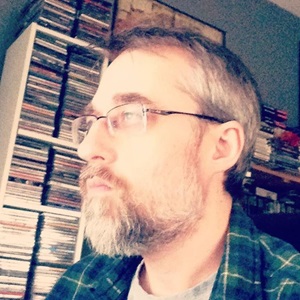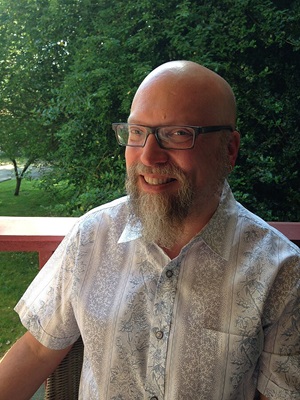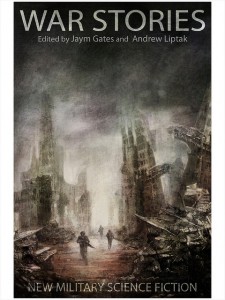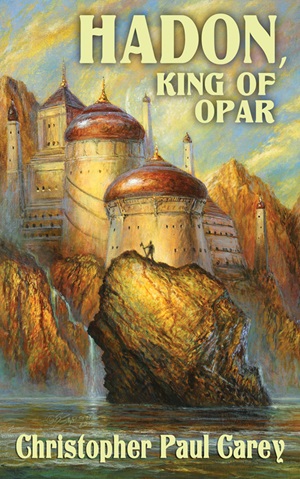
Now and then I pester my creative colleagues with five questions about their work. Most of these folks are friends, a few are secret enemies, and one has been blackmailing me for years.
Robert J. Schwalb is one of those Facebook friends I feel I know better than I actually do. We have never met, but we’ve worked with many of the same people, and by the way some of them clown around with him online, I get the feeling we’d get on like gangbusters. Also, once you see his head pasted on assorted bronies and unicorns, after a while you start to feel like he’s always nearby, waiting for his moment.
With games like A Song of Ice and Fire, Warhammer Fantasy, Numenera, Star Wars Saga edition, and several iterations of Dungeons & Dragons on his resume, Rob has become one of the grizzled veterans of game design in just over the past decade. Now it’s time for him to strike out on his own with a Kickstarter launching his Shadow of the Demon Lord horror-fantasy game, which after less than one day has already funded.
What creators of horror entertainment (movies, novels, comics, games, or anything else) most inspire the evil side of your imagination?
Gosh, there are so many influences, I really don’t know where to begin. Of all the mediums, films have had the most appeal to me. A film makes you a prisoner of the experience. You become trapped in the story until its conclusion, where a book is something you can put down, set aside until you’re ready to continue. Of course, 90 minutes of gripping weirdness is such a small time investment, I’m less inclined to stop it and do something else.
The best kinds of horror films are ones that present a familiar world and then, through the agency of the protagonists, demonstrate that world to be false, an illusion that conceals something far stranger, alien, and uncaring—cosmic horror. Some of my favorite films include In the Mouth of Madness, The Devil’s Backbone, Cemetery Man, The House of the Devil, Jug Face, Pontypool, and The Mist.
When it comes to books, I favor dark or weird fantasy such as Clark Ashton Smith, Machen, Howard, Lovecraft, Leiber, Moorcock, Gene Wolfe, Glen Cook, and Poul Anderson—specifically his excellent work, The Broken Blade. Right now, I have a major crush on Joe Abercrombie. I adore everything he’s written.
I also draw a lot of inspiration from music too. I listen to black metal and death metal while I work. Behemoth, Cannibal Corpse, Dark Fortress, Bolt Thrower, Rotting Christ provide the perfect soundtrack for the worlds and stories I create.
Combining horror and fantasy isn’t exactly a new idea. In fact, some might argue that the definition of horror—as opposed to the thriller or slasher genres—demands some element of the supernatural. Where do you draw the line on that definition?
I agree completely. Horror works well when it undermines what we believe to be true about the world and instills doubts by way of something outside the bounds of our experiences, whether the something is ghost, secret society, alien threat, or something else. For me, I’m interested in telling stories—or, rather, providing the tools for others to tell stories—that challenge what we think about the fantasy genre. The tabletop RPG hobby has a great many such games and settings. My favorite, Warhammer Fantasy Roleplay, I think did it best. D&D has flirted with the genre with Ravenloft and Dark Sun. FFG did Midnight. Dragon Age by Chris Pramas does a great job, as does Numenera by Monte Cook. You’ll find elements of all these games and others in my new tabletop RPG, Shadow of the Demon Lord.
My game focuses on the apocalypse, the end of all things, the unraveling of the shared universe brought about by a cosmic threat whose approach has spawned all the horrible things that run around and make life in the world’s final moments difficult, if not impossible, to live.
Most settings put the big, sexy cataclysmic event in the past or the far future. It’s something that has already happened and the PCs find themselves stomping around the aftermath. Or, the big event is the capstone for a grand campaign, a big menacing threat that will shape how the story evolves. With the former, all the really interesting stuff has already happened. In the latter, the end is so distant, few gaming groups can stay together long enough to ever reach the end. Rather than put off what I feel are the best parts of a fantasy RPG to conclusion that most likely will never be realized at the table, I made the apocalyptic, cataclysmic event the backdrop for the game.
The game posits that the apocalypse is happening or will happen. There’s no way around it, no matter how many golden rings get dropped into the volcano. The Demon Lord approaches and the world will die. What will you do in the world’s final days, months, or years? Will you struggle to survive? Will you search for a way to escape? Or will you surrender to the inevitability?
The game allows groups to decide what apocalyptic event threatens their world. Is it a zombie apocalypse, a global pandemic, corruption of magic, nature out of control, some elder god emerging from the ocean to Godzilla stomp all over civilization? You can choose any of these options and use them to shape the stories you tell. This might be a campaign-defining event, something that might evolve into another threat, or may be something that lurks in the background.
The Sanity rules in Call of Cthulhu are the most famous mechanic for representing horror in a roleplaying game, but there are many others. Have some of them inspired your design on Shadow of the Demon Lord? Have you added anything new in terms of game systems?
Yes, very much so. Shadow of the Demon Lord uses insanity and corruption to simulate what happens when characters encounter the awful and do awful things.
Characters may gain insanity when they see or experience something that strains the way they understand the world or something that harms them in a way that’s difficult to accept. Coming back from the dead, suffering a grievous wound, seeing a loved one brutally killed can all inflict insanity. Seeing a 30-foot tall corpulent demon riddled with drooling maws from which spill slime covered fleshy monstrosities as it waddles across the countryside might also shatter a character’s mind.
Gaining insanity normally causes a character to become frightened for a few rounds. (Frightened is an affliction that makes it harder to do things in the game.) Insanity, once gained, sticks around. Players may spend insanity to buy roleplaying traits—a drinking problem, facial tic, nightmares, and so on. If the player doesn’t buy RP traits, the character is at risk of going mad when he or she reaches maximum insanity. Going mad takes control of the character out of the player’s hands for a bit and can have some nasty and surprising consequences.
Corruption functions as a control mechanism for curbing excess in the game. Shadow of the Demon Lord is an amoral game. There is no such thing as good or evil. Players can play their characters in whatever way makes sense for their individual stories. Some actions and activities have lasting consequences. Murder in cold blood, torturing the innocent, learning Black Magic or Demonology spells can leave stains on the character’s soul. Corruption measures the degree to which a character’s soul is stained. A few points has little affect on a character, but accumulating several may cause some interesting developments to occur in the game. For example, a character with a handful of Corruption points might cause children in his or her presence to cry, animals to attack, food to spoil, and shadows to writhe. A character that gains Corruption from certain sources might suffer other effects. One of my favorites is from the Black Magic tradition. If you learn too many Black Magic spells your character might become so corrupted that once each week a child within 8 miles of the character simply dies.
The game designer is important, but I think we’d agree that the Game Master is at least as important, especially in a horror setting. What does a great horror GM do to elevate the material and genuinely terrify the players?
The cheap answer is to drop the “more art than science” cliché, but everyone knows this one. Instead, here are some of the tricks I use.
I reveal the elements of horror through the player characters’ actions. I let their inquiries, decisions, and explorations uncover the terrifying rather than beat them about the head and shoulders with gross-out descriptions.
I also seed horrific elements in unexpected places. The farmer the PCs help secretly keeps five dead halflings strung up in his barn. The priest has an extra mouth in his armpit that whispers vile things to him when he sleeps.
There’s also a balancing act you have to play as a GM between scaring the players and scaring the characters. Good roleplayers can play through scary and uncomfortable scenes as they would any other scene. Others, especially those more focused on the game’s mechanics, need to be nudged. I think it’s good for the story when you use opponents that are beyond the characters’ capabilities, environments that pose lethal threats, and introduce dangers that can alter how characters behaves in the game. Of course, I use these elements sparingly to make sure they pack a punch. In small doses, they work well. In large doses, they can be game killers.
Last, humor is critical. We play games, even horror games, for fun. Some of my most hilarious memories come from playing Call of Cthulhu. Laughter defuses the tension long enough to let you build it back up again.
Most fantasy games feature powerful heroes who overcome the enemy by force of arms and magic. Yet instilling horror in players is easiest when they feel their characters are vulnerable. How do you juggle those seemingly contradictory states?
This issue was the hardest one for me to overcome with Shadow of the Demon Lord. Everything I said above helps, but beyond those tips, I find horror works well when the players find their characters faced with no good options, when any decision they might make has nasty, sad, or disturbing consequence.
Back when I was working on 4th Edition sourcebooks for Wizards of the Coast, one of the last traps I built was an update to an older magic item—the mirror of life trapping. The original item, usable only by magic-users, would draw a creature into its surface. The item’s owner could call forth the image of the trapped individual or cause it to recede into the mirror’s surface. I love this item.
Characters in 4th Edition are hard to hurt, harder to kill, and almost impossible to scare. The game system insulates characters against death and even grants them the ability to overcome it on their own at the highest levels of game play. Love it or hate it, that’s the nature of the game. My mission for the 4E Book of Vile Darkness, the book in which my take on the mirror appears, was to create elements that could cause lasting harm to characters, to genuinely threaten them in ways the game hadn’t allowed before. Enter the mirror of life trapping.
The mirror attacks any sighted creature that starts its turn next to it and can see its reflection on its surface. If the attack hits, the mirror removes the creature from play. If there is already a creature inside the mirror when the trap is triggered, the new creature replaces the old one. If you break the mirror, you kill the creature inside it. Here’s how it might play out:
Fritz the Warrior and his companions explore an old mansion in a city. Fritz happens to see the mirror and looks at his reflection. The mirror attacks, hits, and draws Fritz inside the surface. Fritz can’t leave the mirror until someone else takes a look and becomes trapped in his place. What does the party do? Who do they doom to spend eternity inside the mirror? Whose life is worth more than Fritz’s? Of course, the PCs might find some “evil humanoid” to take his place, but what if they are under pressure? Do they sacrifice an innocent to the mirror to free their friend?
While not the most horrific thing in the world, the trap creates a difficult moral choice for the characters, an interesting and uncomfortable roleplaying predicament the characters must find some way to overcome while being true to the personas they adopt in the game. Fun stuff.
Check out the Shadow of the Demon Lord Kickstarter campaign and maybe help knock down some of those crazy stretch goals. You can also find Rob at his website.






